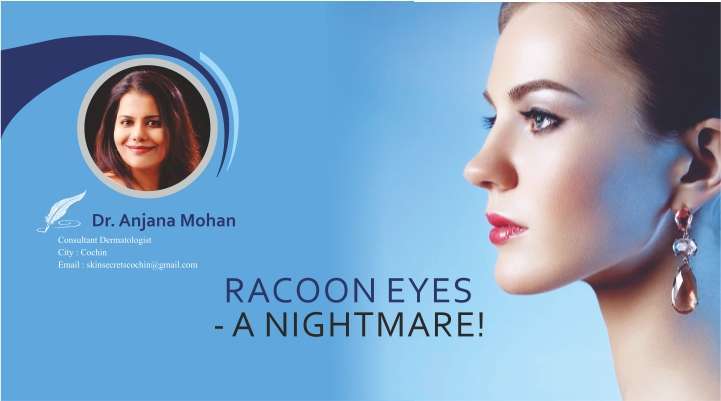Periorbital Hyperpigmentation (POH)
is one of the most commonly encountered conditions in routine dermatology practice. Pigmentataion around eyes is an identity for animals not for humans! Dark circles under the eyes (DC) are defined as bilateral, round, homogeneous pigment macules on the infraorbital regions. DC are caused by multiple etiologic factors that include dermal melanin deposition, postinflammatory hyperpigmentation secondary to atopic or allergic contact dermatitis, periorbital edema, hormonal variations, drugs, superficial location of vasculature, shadowing due to skin laxity, wrinkles and tear trough. They can be genetic and can be seen as an extension of facial pigmentary demarcation lines and rarely due to facial acanthosis nigricans.
Management
- Lifestyle modification
- Dietary modification
- Topical Medicaments
- Chemical Peels
- Lasers
- Others
Lifestyle Modification:
- Adequate water intake.
- Avoidance of stress, regular exercise, meditation
- Adequate supply of quality sleep
- Avoidance of smoking: constriction of blood vessels due to smoking prevents adequate blood flow to the skin under the eyes thus triggering dark circles.
- Application of sunscreens over periorbital area.
- Wear Hats with wide brims.
- Wear dark glasses.
- Use make-up containing SPF
- Avoid make-up that feels too heavy and sticky with fragrance
- Keep a check on the triggering factors(if any) – eye drops, facial creams, hair dye etc
- Abstain from rubbing your eyes- repeated rubbing and scratching leads to breakage of delicate capillaries in the area and results in dark circles
- Avoid giving too much pressure while removing make-up to avoid exacerbation due to rupture of those capillaries
- Keep check on the expiry dates of your eye cosmetics
- Follow proper application method of creams: gentle strokes from outside inwards on lower lids and inside outwards on upper lids.
Dietary Modification:
- Consume diet rich in beta-carotene, lycopenes, Iron, antioxidants, minerals like selenium and Vitamin A, C and E.
Topical Medications:
- Sunscreens
- Creams containing very mild Hydroquinone, Alpha hydroxyl acids, Vitamin c, Retinols (low concentrations), Vitamin K, Vitamin E, Collaging boosters and Antioxidants
- Skin lighteners like kojic acid, Azelaic acid, Mandelic acid, Arbutin, Tetra hydro curcumin,Topical Vitamin C
- Short term use of triple combination creams-Kligmans formula
Note: Creams containing Retinols, Vitamin C and Hydroquinone are particularly unstable products and if they turn brown in colour or if Vitamin C products crystallize, it is advisable to discard them.
Chemical Peeling:
Arginine peel
Lactic acid peel
Glycolic acid
TCA 3.75%
Citric acid
Retinol Peels
Lasers:
Q Switched Nd YAG laser
CO2 LASER
Q-Switched Alexandrite 755 nm
Ablative laser resurfacing.
Others:
Hyaluronic acid fillers – tear trough
Botulinum Toxin – crows feet correction for a refreshed look
PRP
Mesotherapy
Autologous fat transplantation
Blepharoplasty
Carboxytherapy
*-*-*






